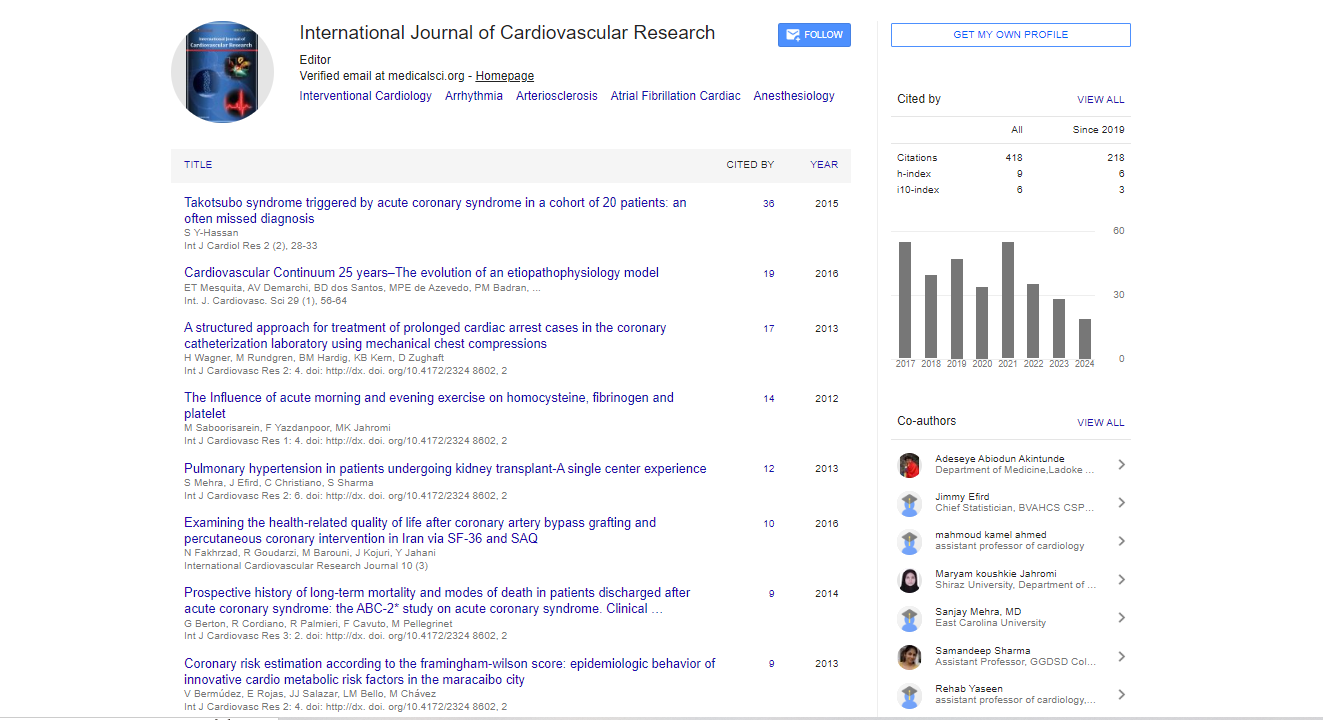Research Article, Int J Cardiovasc Res Vol: 6 Issue: 3
Prophylactic ImpellaTM Pump Support in High Risk Percutaneous Coronary Interventions of the Left Main with normal LV Function
Behrouz Kherad1, Jens Fielitz1, Florian Blaschke1, Carsten Tschope1,2,3,Burkert Pieske1,3,4 and Florian Krackhardt1*
1Department of Cardiology, Charité – Universitätsmedizin Berlin, Campus Virchow Klinikum, Berlin, Germany
2Berlin Center for Regenerative Therapies (BCRT), Berlin, Germany
3The German Center for Cardiovascular Disease (DZHK), Berlin, Germany
4Department of Cardiology, Deutsches Herzzentrum Berlin (DHZB), Berlin, Germany
*Corresponding Author : Florian Krackhardt
Department of Cardiology, Charité – Universitätsmedizin Berlin, Campus Virchow Klinikum, Augustenburgerplatz 1, D-13353 Berlin, Germany
Phone: +49 (30) 450-665542
Email: florian.krackhardt@charite.de
Received: May 04, 2017 Accepted: June 22, 2017 Published: June 27, 2017
Citation: Kherad B, Fielitz J, Blaschke F, Tschope C, Pieske B (2017) Prophylactic ImpellaTM Pump Support in High Risk Percutaneous Coronary Interventions of the Left Main with normal LV Function. Int J Cardiovasc Res 6:3. doi: 10.4172/2324-8602.1000308
Abstract
In patients with complex coronary anatomy, coronary artery bypass grafting has been the recommended revascularization strategy; however, due to their comorbidities many of these patients have a high operative mortality. Percutaneous coronary intervention (PCI) may then be a viable alternative for these patients with high-risk features. Prophylactic partial hemodynamic support with a micro axial percutaneous left ventricular assist device (ImpellaTM) during PCI might be beneficial in these patients. The ImpellaTM 2.5 blood pump has been shown to be safe and effective in elective and urgent high-risk PCI patients by reducing peri-and post-procedural adverse events. Here, we present several cases of ImpellaTM 2.5 guided high-risk coronary intervention of unprotected left main. The hemodynamic support enabled preserving the mean arterial pressure (MAP) in all cases during repeated coronary manipulations and could be removed due to stable hemodynamic condition of the patients immediately after completion of the intervention. No site insertion or other complications occurred. Further studies are necessary to determine whether these observations can be replicated in a larger cohort.
 Spanish
Spanish  Chinese
Chinese  Russian
Russian  German
German  French
French  Japanese
Japanese  Portuguese
Portuguese  Hindi
Hindi 



